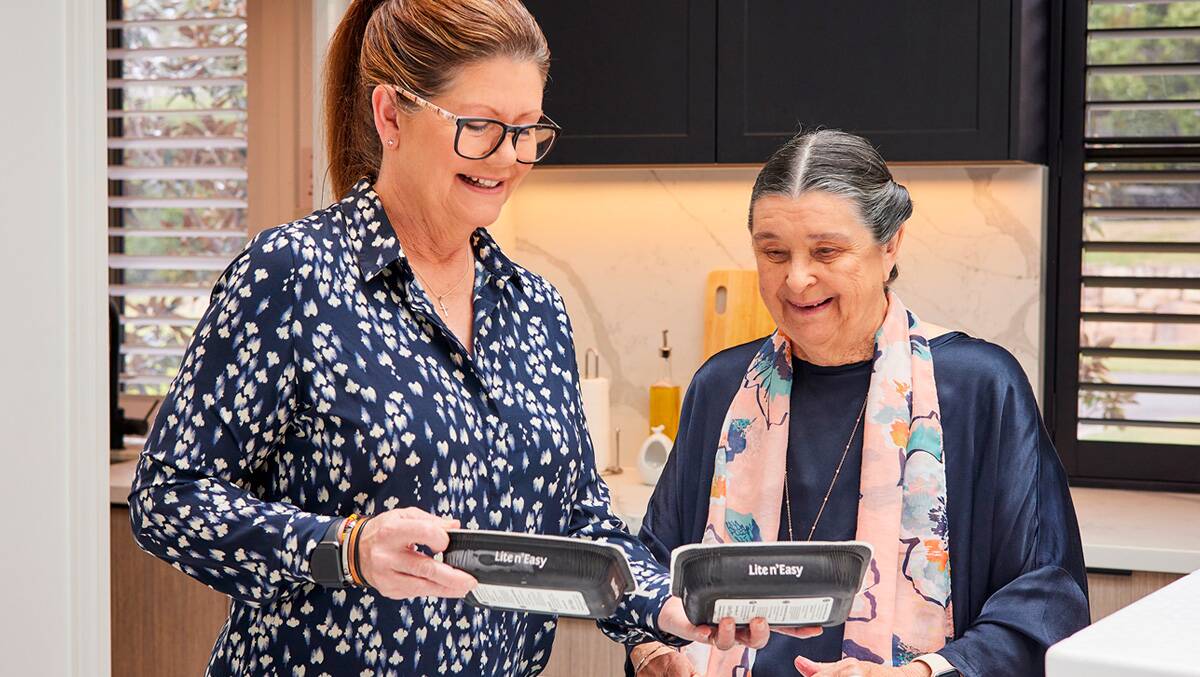Recognising and managing malnutrition in older Australians

Sponsored content
Malnutrition might sound like a condition that only affects people without access to nutritious food, or any food at all - but in fact, it's a major public health issue in Australia, particularly for older Australians. Lite n' Easy dietitian Melissa Holloway explains further.
Malnutrition is defined as a deficiency in energy and/or nutrient intake; in other words, not eating enough to preserve body weight or function.
We know rates of malnutrition in residential aged care and public hospitals are high. People are often unwell and in need of care from health professionals.
However, research has identified that up to 17% of older adults in the community are also malnourished.
Because older people in the community are having less frequent interactions with health professionals than in healthcare settings, malnutrition can go unrecognised and untreated for a long time.
When left untreated, malnutrition negatively impacts a person's daily function - their strength, energy levels and psychosocial well-being. It also increases the risk of a fall, likelihood of admission to the hospital and can reduce life expectancy.
A common experience in older age is a decrease in appetite - people just don't feel as hungry as they used to. While we don't need as much energy in older age, often a person's appetite can fall further than what is needed, increasing the chance of not eating enough. On top of that, some medications affect our absorption of nutrients, and we also have higher needs for some nutrients like protein and calcium as we get older.
So how do I know if I am eating enough?
Ask yourself the following questions regularly to keep an eye on your nutritional well-being:
- Am I eating less than I normally do?
- I am feeling as hungry as I normally do?
- Have I lost weight recently without meaning to?
- Have I skipped any meals lately because I didn't feel hungry?
- Are my clothes feeling looser?
- Is my jewellery feeling looser?
- Are my dentures still fitting well?
It's important to see your GP or an Accredited Practising Dietitian if you are concerned about your nutritional intake, or if you have lost weight recently without trying.
Malnutrition is treated by consuming enough energy and protein to maintain, or (ideally) regain body weight.
With a small appetite working against you, it feels like you couldn't possibly eat more.
Eating well with a small appetite means you need to;
- Make the most of meal times by consuming foods that are high in energy (calories) and protein.
- Eat regularly and avoid skipping meals.
- Tempt your appetite with foods you enjoy.
- Consider whether you may need a nutrition supplement.
Lite n' Easy's My Choice range is designed for older Australians who have smaller appetites.
The My Choice range of main meals are smaller in size than our regular dinners, but importantly, provide the same amount of energy and protein. Over 90%* of our customers tell us they are able to finish a My Choice main meal in one sitting.
Our My Choice Soups and Desserts range are the same size as our regular soups and desserts, but provide more energy and double the protein per serve.
*Surveys completed with Lite n' Easy customers who ordered My Choice main meals in 2021 & 2022.
Think you could benefit from Lite n' Easy? Order online today using promo code TSNAT30 to receive 30% off your first delivery. Or, if you are a HCP recipient, call us on 13 15 12 and mention this offer. Valid for new customers' first delivery only. Cannot be used with any other offer.
Sponsored content


